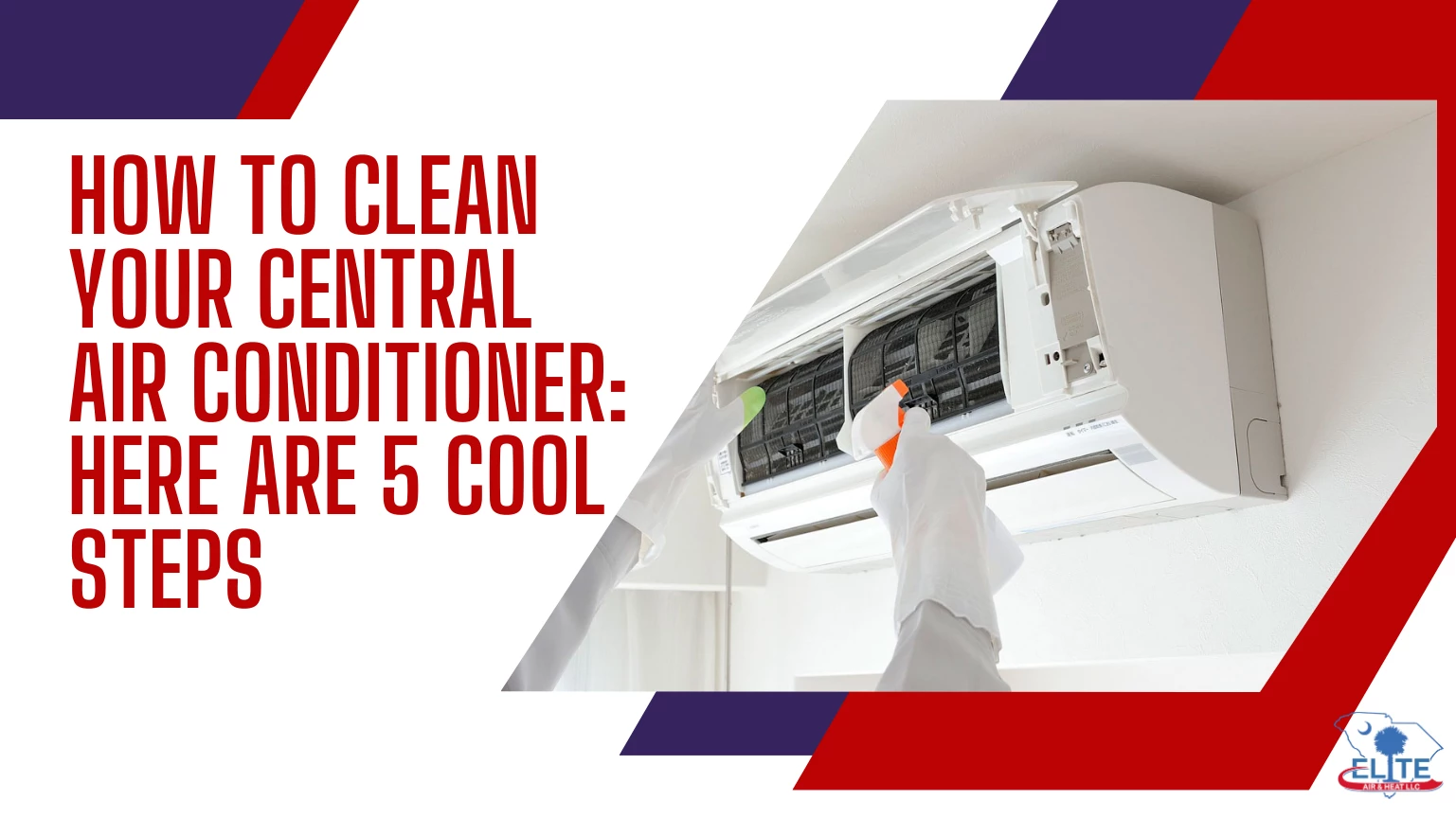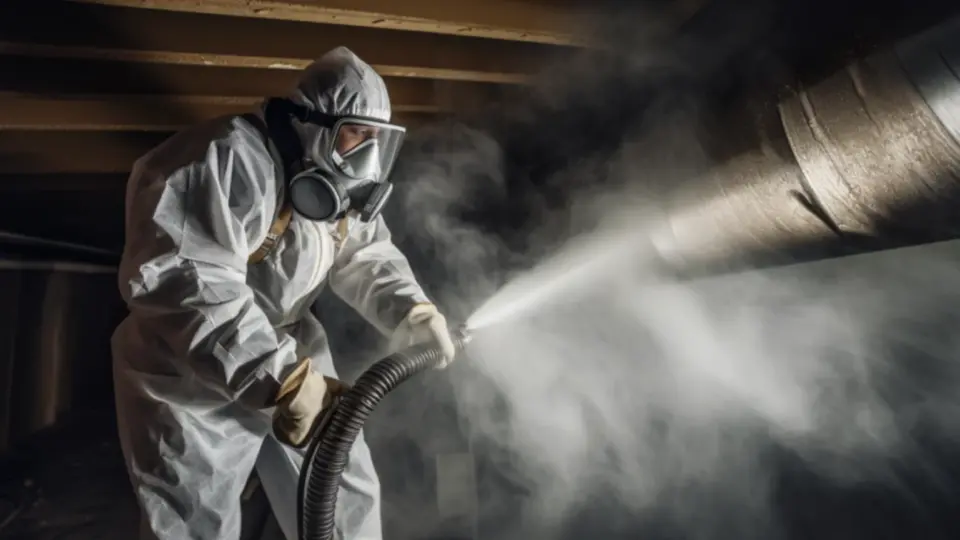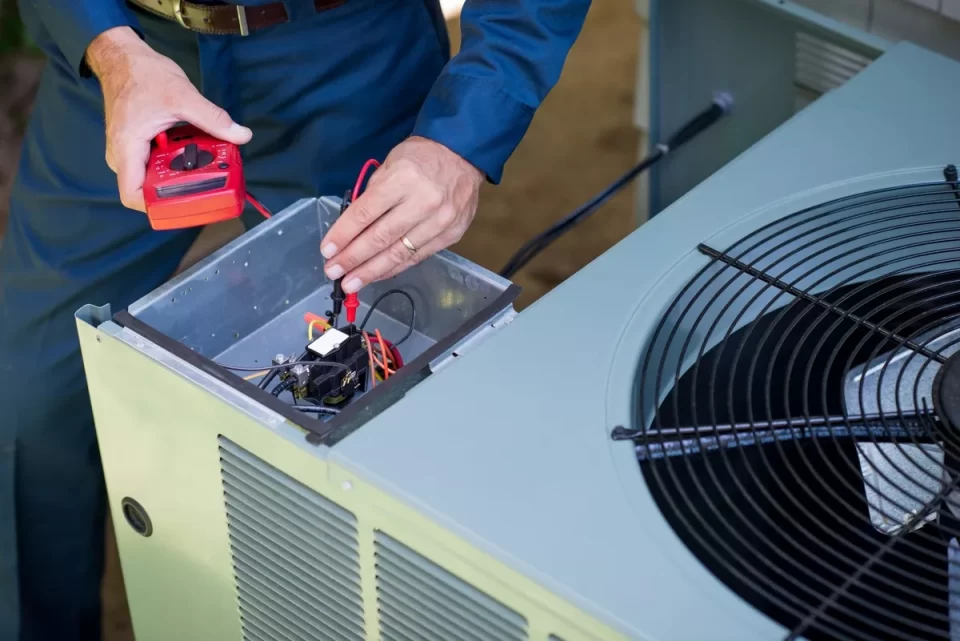Summer is almost here and the heat is starting to rise. You turn on your central air conditioner, expecting a wave of cool air to fill your home, but instead are greeted with a musty smell and loud rattling noises. This can only mean one thing – it’s time for some maintenance!
Don’t worry, cleaning your central air conditioner may sound like a daunting task, but with these 5 simple steps, you’ll have it running like new in no time.
The Importance of Central Air Conditioner Maintenance
Ignoring your cooling system can lead to a host of problems, from reduced cooling performance and increased energy bills to more severe issues like mold growth and a shortened system life. Regular maintenance checks can catch smaller problems before they grow into major headaches, but cleaning is something most homeowners can — and should — do on their own.
Ready to roll up your sleeves and get that AC system humming at peak performance? Here’s a detailed guide on how to clean your central air conditioner in 5 straightforward steps.
Step 1: Safety First and Preliminary Inspection
Any time you work with your central air conditioner, safety should be your top priority. Always begin by turning off the unit at the thermostat and the circuit breaker to ensure no electricity is flowing. While you should never dismantle your system unless you’re a professional, a safety check involves visually inspecting the interior and exterior components, looking for any frayed wires, or obvious signs of wear and tear that might require professional attention.
Step 2: Clean or Replace the Air Filters
Your air conditioner’s air filters are your first line of defense against dust, allergens, and debris. The U.S. Department of Energy recommends checking your filterselit every month and replacing them at least every 90 days–more if you have pets or respiratory sensitivities.
How to Clean a Reusable Filter
- Turn off the AC.
- Remove the filter and vacuum with a soft-bristle brush attachment.If it’s really dirty, give it a good wash with soap and water, then make sure it’s completely dry before reinstalling.
How to Replace a Disposable Filter
- Note the size you need from the existing filter, which is often found printed on the frame.
- Purchase a replacement filter and install it according to the airflow direction marked on the unit.
Clean filters maintain airflow and indoor air quality, reduce strain on the system, and improve overall efficiency.
Step 3: Clean the Outdoor Condenser Unit
The outdoor condenser unit is where heat from the inside of your home is dispersed into the outside air. Over time, grass clippings, leaves, and other outdoor debris can accumulate and clog the unit’s fins, leading to poor heat transfer and increased energy consumption.
What You’ll Need:
- A garden hose with a spray nozzle
- Fin comb (optional for straightening bent fins)
- Vacuum with a soft-bristle brush attachment
How to Clean the Outdoor Unit:
- Shut off power: Always turn the power off using the shut-off box or circuit breaker.
- Remove debris: Gently vacuum away debris from the fins. Never use a pressure washer, which can cause damage.
- Straighten fins: Use a fin comb to straighten any bent fins, which can obstruct airflow.
- Clean the area: Trim back vegetation and clear any debris within two feet of the unit to ensure proper airflow.
- Restore power: Once everything is clean, turn the power back on and listen for any irregular sounds.
Proper airflow and heat transfer through the condenser are essential for optimal cooling performance.
Step 4: Clean the Evaporator Coils
The evaporator coils are located inside the air handler unit or above the furnace. They cool the warm air that blows over them, which is circulated throughout your home. Over time, these coils can accumulate dirt that acts as an insulator, reducing their ability to absorb heat effectively.
What You’ll Need:
- Hand tools to access the air handler or furnace
- Soft-bristle brush
- Commercial coil cleaner (optional)
- Large spray bottle
- Commercial coil cleaning solution (optional)
How to Clean the Evaporator Coils:
- Access the coils: Follow the manufacturer’s instructions to open the air handler or furnace and locate the coils.
- Brush away dust: Using a soft-bristle brush, carefully brush away any surface dirt on the coils.
- Spray and clean: For tougher buildup, use a commercial coil cleaner according to the manufacturer’s instructions.
- Rinse: Fill a large spray bottle with water and rinse away the cleaner and dirt.
- Leave to dry: Allow the coils to air dry completely before closing the unit.
Keeping the evaporator coils clean ensures efficient operation and prevents mold growth on wet coils when not in use.
Step 5: Check and Clean the Condensate Drain Line
The condensate drain line plays a vital role in eliminating the moisture extracted by the evaporator coils. As time goes by, algae, mold, and other contaminants may accumulate, leading to blockages and potential water backup issues in your home.
How to Check and Clean the Condensate Drain Line:
- Locate the drain opening: This is typically a PVC pipe near the indoor unit.
- Inspect and clear: Check for any blockages and clear with a long, flexible brush or access the cleanout port near the indoor air handler to vacuum the line if necessary.
- Prevent future blockages: Pour a cup of vinegar down the drain line once a year to keep it clear.
A clean condensate drain line prevents water damage to your home and ensures that your air conditioner can dehumidify the air properly.
Maintaining Your Central Air Conditioner Between Cleanings
In addition to these steps, there are several other tasks you can perform to keep your central air conditioner running smoothly between cleanings:
- Keep the area around your air conditioner clean and free of debris.
- Make sure all vents and returns in your home are unobstructed to allow for good airflow.
- Be sure to schedule regular maintenance with the pros at least once a year, preferably before the cooling season, to catch and correct any issues early.
- Consider installing a programmable thermostat to manage your home’s temperature more efficiently.
Ensuring your central air conditioner is well-maintained is key to keeping your home cool and comfortable when temperatures rise. By following these simple steps and staying on top of maintenance, you can trust that your AC unit will always perform at its best. Remember, if at any point you’re uncomfortable with any of these tasks, it’s best to leave it to a professional.
Need Help? Call the Pros for AC Cleaning!
Looking for hassle-free maintenance from the pros? Contact Elite Air & Heat LLC to schedule a checkup or for any air conditioning concerns. Your HVAC system will thank you with years of efficient service, and your wallet will appreciate the energy savings. Stay cool this summer — and every summer to come.
Give us a call to get started!




